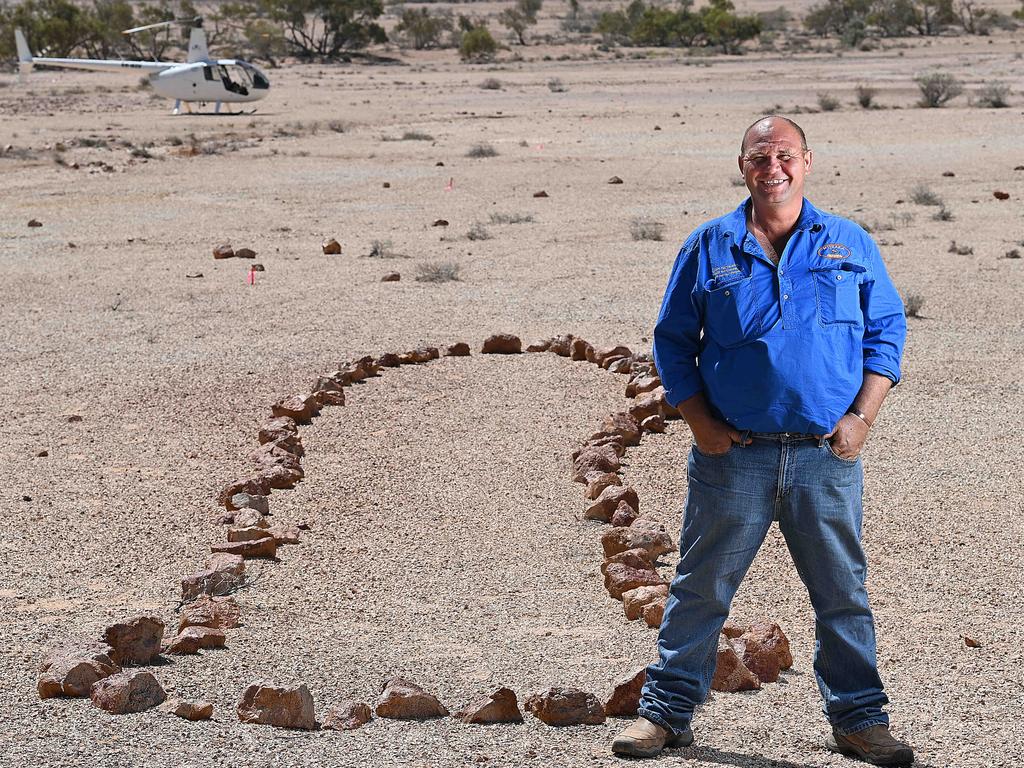Dr Deep Time Mike Smith downs tools for last time
Archaeologist Mike Smith’s pioneering fieldwork in Arnhem Land and Central Australia changed the way Australians understood the prehistory of their continent.

Archaeologist Mike Smith, whose pioneering fieldwork in Arnhem Land and Central Australia transformed the way Australians understood the prehistory of their continent, has died following a long illness. He was 67.
His death was announced last week by his family, who said Smith had “put down his tools and hung up his hat” for the last time after a long battle with cancer.
Affectionately known as Dr Deep Time, Smith led a series of groundbreaking digs throughout the 1970s and ’80s, culminating in two career-defining projects in the late 1980s at Malakanunja in Arnhem Land and Puritjarra rock shelter in Central Australia.
The two projects have since been credited with deepening the chronology of the Australian continent, pushing the date of human occupation in Central Australia from 10,000 years to 35,000 and Arnhem Land to 55,000.
Born in 1955, Smith moved to Australia from Blackpool, England, at the age of six as the son of “£10 Poms”. The working-class family settled in suburban Adelaide in the early ’60s to escape the rigid English class system and improve their lives in Australia.
Smith, who never fully lost his Lancashire accent, regarding it “as a speech impediment”, always insisted he never felt anything but Australian. In 1967, at 12, he made a conscious decision to pursue archaeology. He wrote to the South Australian Museum to ask whether he could volunteer on archaeological digs, and joined fieldwork projects carrying buckets and making tea. By the time he reached the ANU, he was a seasoned fieldworker. In term holidays, he joined digs across Australia with distinguished archaeologists Alexander Gallus, Rhys Jones, Sandra Bowdler and John Mulvaney.

“This was the Elizabethan Age of Australian archaeology, when the field was expanding rapidly, with lots of adventure, exploration and new discoveries,” Smith said in a 2012 interview. “It was so unbelievably exciting.”
While his 1989 investigation at Malakanunja made headlines across the world – contributing to the often-quoted 55,000-60,000 year date of Aboriginal occupation – it was his work in Central Australia’s sandplain country, west of Alice Springs, that cemented his status.
In the early ’80s, Smith wanted to test the generally accepted belief that Central Australia had been occupied by humans only after the last ice age. There was already persuasive evidence that human occupation extended back 30,000 years in most of the continent’s ecological zones, but what of Australia’s arid centre?
After years of hunting for the perfect site to test his theories, Smith pinpointed Puritjarra rock shelter, a mighty red sandstone cave rising from a sea of desert oak and spinifex, in the Cleland Hills.

His investigation uncovered a deep history, proving human occupation in Central Australia goes back some 35,000 years – a timeframe at least as long as humans have occupied western Europe.
After Lake Mungo, Puritjarra is still recognised as the single most important archaeological site in Australia.
Historian Tom Griffiths, a colleague at the ANU, remembered his friend as a deeply learned scholar, whose fieldwork “changed the way Australians understand the recent and deep past of their continent”.
Fellow historian Peter Stanley praised Smith’s book, The Archaeology of Australia’s Deserts, as an influential contribution to our understanding of the people of ancient Australia.
Smith is survived by his widow, Manik, and two adult children.






To join the conversation, please log in. Don't have an account? Register
Join the conversation, you are commenting as Logout